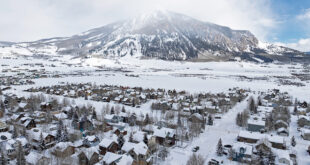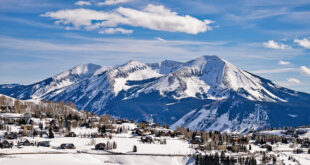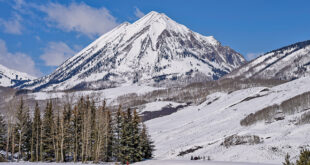The impacts of “growth” don’t just come in the form of more good things (Norton’s Notions) or more bad things (Bill Oliver’s letters). It comes with both. And I have heard the argument that even based on increasing sales tax dollars, this place really isn’t “growing” when you take into account things like inflation. Add to the fact that everyone thinks the place is about perfect when they get here and want it to stay like that moment, and you have the growth discussion.
My concern is that sometimes growth or decline in a community comes so sneakily that the nebulous “quality of life” values of a particular place get swept out, sometimes without people even realizing it.
For example, in order to make the increasing rents or higher mortgage payments that have come to the valley in the last 25 years, parents have to work more. So there’s less time to coach Little League or help with dance. Just the increased housing costs force working families away from town. There’s less opportunity to sit on a bench on Elk Avenue with an acquaintance to just catch up and exchange ideas.
It’s not just the slower small town pace but the small town attitude that can be jeopardized by change that comes with progress or decline in a town. For example, it used to be that anyone here this time of year felt a unique camaraderie for suffering together through mud season. And it was mud season. There was a lot less pavement around 30 years ago and the spring weather made everything muddy. A snowstorm in May and June would ultimately weed out those who easily went insane when the going got tough.
In the 80s and 90s, everyone (and I mean everyone from the ranchers to the old-timers to the hippies and the Realtors) would wave at each other as they passed in their vehicles. You would say hi on the sidewalk to literally everyone and get a response. Not everyone does that anymore. Certainly most people still do but others look at you when you wave or say hi like you’re a stalker on a dark city street.
Coming around a corner by the skate park a week ago, I got the one-finger wave from a speedy driver who apparently thought I cut it too short. Wow. I just heard the story of a person on a four-wheeler essentially patrolling and accosting people walking their dogs without leashes on the rec path. People get yelled at for walking on the roads in Trapper’s Crossing. The concerns of these people might be legitimate but the delivery is less small town neighbors and more inner city agro. There sometimes appears to be less tolerance for people outside of your belief system and comfort zone.
Now don’t think it was all roses back then. People fought but they did it with respect. They might throw each other through the plate glass window of the Grubstake or Kochevar’s at night but they would wave at each other in passing the next day.
I was recently sent a reminder of the collaboration between HCCA and the Gunnison Stockgrowers Association over public land use and range reform 20 years ago. What became known as the Gunnison Working Group brought together people of this valley who might normally be on opposite sides of most fences. Such compromise and collaboration was unusual in the rest of the country (maybe more so now) but it was understood here in 1993 that working together was how things were accomplished. The then–U.S. Secretary of the Interior Bruce Babbitt tried to take that template of enviros and ranchers working through compromise to the rest of the country. It didn’t really work. Once again, this place didn’t fit into the mainstream but it was centered on intelligence, respect and a lack of fear to be different.
Someone this past weekend described to me the vibe in town as having more of an “outlaw” feeling 20 years ago. Not in a bad way but in a fun, irreverent way. People here could be a bit crazy and do things not considered normal in other places but be unconditionally accepted in Crested Butte. There were people like Rippe and Frog and Crazy Kenny. Really smart, thoughtful, a bit odd and obviously not missing mainstream America, these characters gave depth to the place not usually seen in more typical communities. To the person making the observation, this place has gotten more conservative. His thought was that while people including families might ride the “moon bus” in 1994, these days, many new families would cover their eyes at such a sight.
And a perceived nick in the “quality of life” is not just because of more people and things. Frankly, I miss the busyness of the winters. Après’ ski was a real happening most days in the early 1990s. There were a half-dozen more places for live music on the mountain 25 years ago than there are today. But as the condos went up, the fun was torn down to make way for those lodges. And then people didn’t come to fill the new rooms perhaps because it wasn’t as much fun.
There used to be a happy holiday buzz on the slopes and in the mountain businesses for the three weeks around Christmas. Spring break was packed for a month and the streets were filled shoulder to shoulder with people speaking different languages sharing warm ski days and clear, fun evenings. There was an abundance of positive resort ski town vibes. Some of that seemed to be coming back last season but there’s just not the amount of places on the hill to create a fun party buzz as there were in the past.
So the “growth” debate is legitimate. All of us have to deal with the consequences—good and bad because things will change. Is there a way to find balance between growth, decline and “quality of life?” I think so. It comes by realistically addressing impacts and finding ways to mitigate those impacts so we continue to enjoy the place. If we keep making decisions based on what’s good for the people living here, Crested Butte will continue to be that somewhat funky place high in the mountains that is filled with soul.
 The Crested Butte News Serving the Gunnison Valley since 1999
The Crested Butte News Serving the Gunnison Valley since 1999




